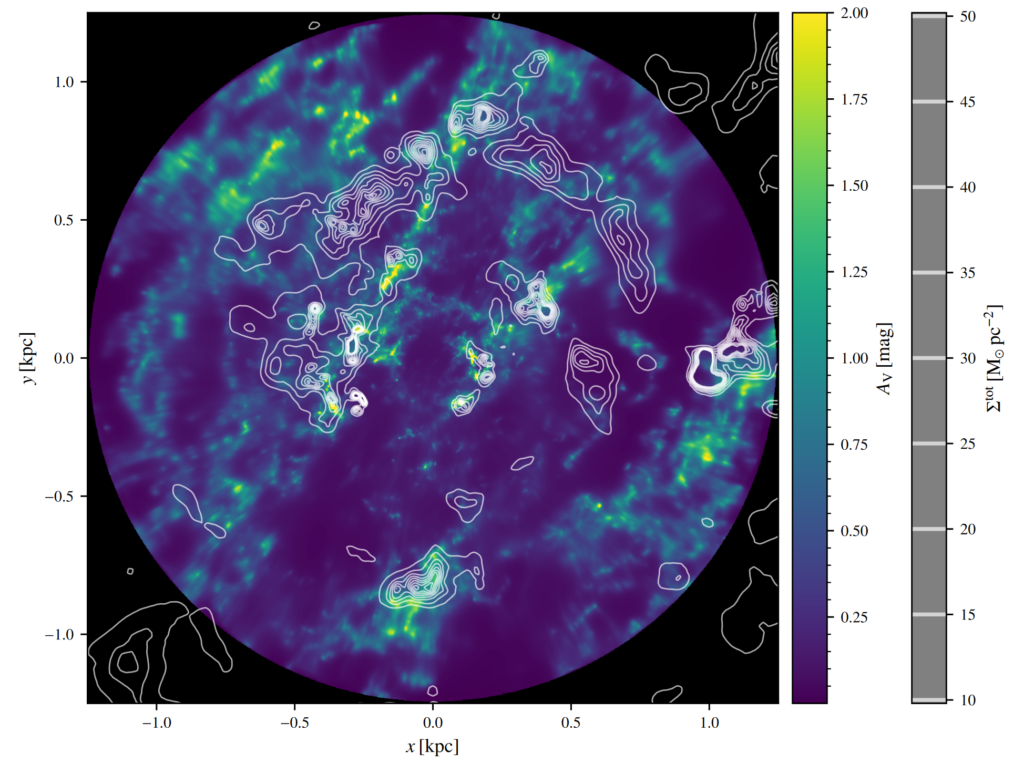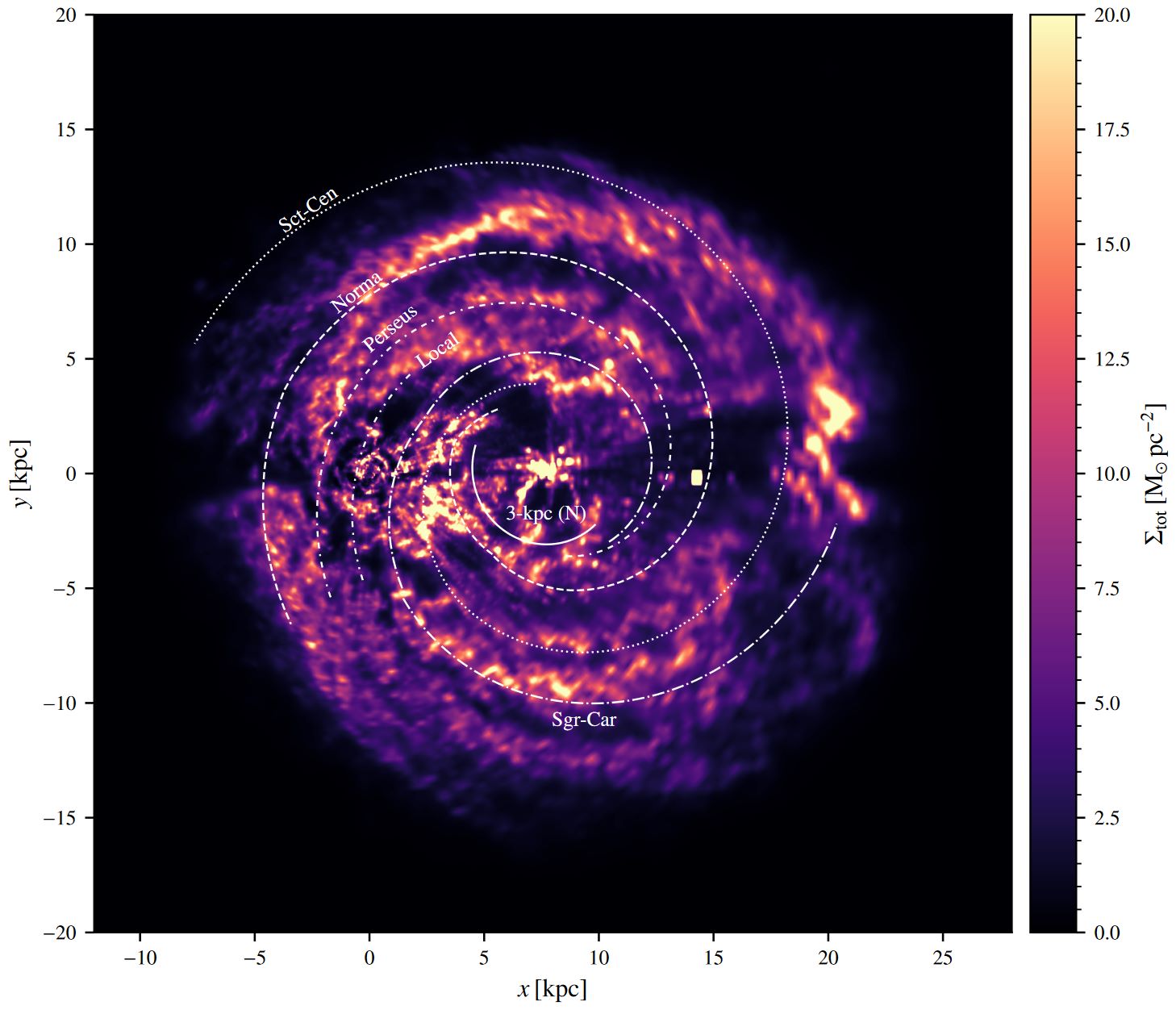I am the first author of a paper, in which we reconstruct 3D maps of interstellar Hydrogen (atomic Hydrogen via the 21 cm emission line and molecular Hydrogen traced via line-emission of CO), the interstellar velocity field, and the line-widths of the respective emission lines.
Title: Spatially Coherent 3D Distributions of HI and CO in the Milky Way
Abstract:
Context: The spatial distribution of the gaseous components of the Milky Way is of great importance for a number of different fields, e.g. Galactic structure, star formation and cosmic rays. However, obtaining distance information to gaseous clouds in the interstellar medium from Doppler-shifted line emission is notoriously difficult given our unique vantage point in the Galaxy. It requires precise knowledge of gas velocities and generally suffers from distance ambiguities.
Aims: Previous works often assumed the optically thin limit (no absorption), a fixed velocity field, and lack resolution overall. We aim to overcome these issues and improve previous reconstructions of the gaseous constituents of the interstellar medium of the Galaxy.
Methods: We use 3D Gaussian processes to model correlations in the interstellar medium, including correlations between different lines of sight, and enforce a spatially coherent structure in the prior. For modelling the transport of radiation from the emitting gas to us as observers, we take absorption effects into account. A special numerical grid ensures high resolution nearby. We infer the spatial distributions of HI, CO, their emission line-widths, and the Galactic velocity field in a joint Bayesian inference. We further constrain these fields with complementary data from Galactic masers and young stellar object clusters.
Results: Our main result consists of a set of samples that implicitly contain statistical uncertainties. The resulting maps are spatially coherent and reproduce the data with high fidelity. We confirm previous findings regarding the warping and flaring of the Galactic disc. A comparison with 3D dust maps reveals a good agreement on scales larger than approximately 400 pc. While our results are
not free of artefacts, they present a big step forward in obtaining high quality 3D maps of the interstellar medium.
Authors: Laurin Söding, Gordian Edenhofer, Torsten A. Enßlin, Philipp Frank, Ralf Kissmann, Vo Hong Minh Phan, Andrés Ramírez, Hanieh Zhandinejad, and Philipp Mertsch
Link to arXiv: arXiv:2407.02859
Link to publisher: Following acceptance

